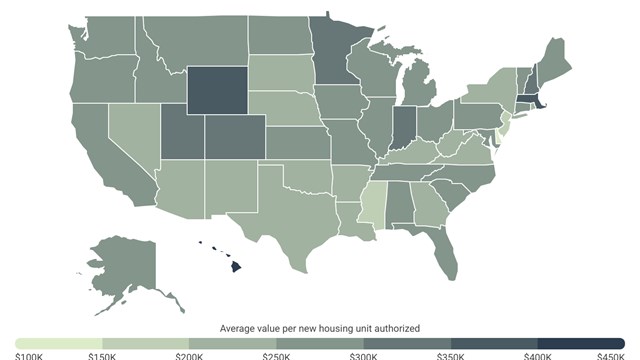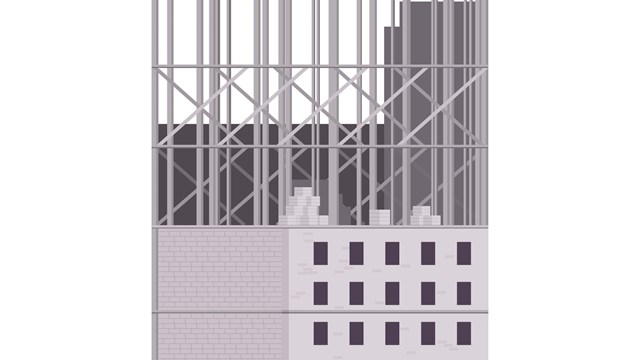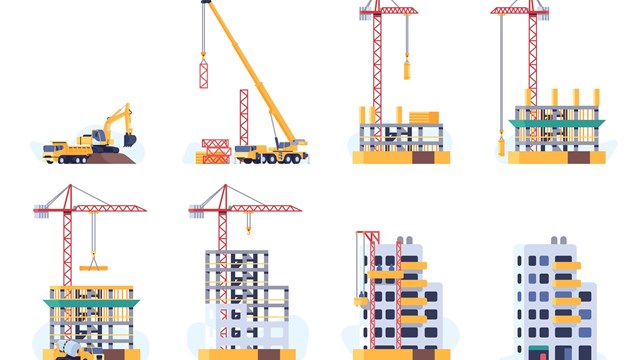
There's a certain allure to being the very first owner of a condo in a brand new building. To be able to wake up every day in a space that's totally your own, free from the dents, dings, and spackel of previous owners' experiences in the place that you now call home. And with New York City offering tax abatements for new developments across the boroughs, that shiny brand new unit is an enticing option.
But what happens when that new building comes with problems? Leaks in apartment units, mechanical problems, insufficient noiseproofing, and other issues that might not be easily identifiable during a walk-through of a brand new unit? Issues that won't pop up until residents have moved in and started living in the space? If you’re buying new, it pays to take what steps you can to insure that the unit you're purchasing is as close to perfect as it can be. Caveat emptor isn’t just an adage to remind buyers to be careful. When the thing you’re buying is also where you’ll be living and likely represents your single biggest investment, naturally you want to protect that investment by every possible means. Ensuring your new home is in top shape before you move in is a good place to start.
Identifying Problem Areas
Ask any real estate broker, attorney, contractor or developer about construction problems on new residential buildings, and you’ll likely get a different answer from each professional. But in the view of Manhattan-based attorney Adam Leitman Bailey, problems with construction often start at the builder/developer stage.
“They hire the cheapest contractors, and use the most inexpensive materials,” Bailey says, adding that the top physical problems with new residential construction are insufficient coating on the roof, and incorrectly-sized boilers that area too weak for the building’s needs. Having too few elevators installed in a building also can be a problem in some new structures. Sometimes the new building lacks adequate sound-proofing, or the sound-proofing was improperly installed. Leaks, and lack of soundproofing between floors and walls, are two of the most common problems in new construction, says attorney Stewart Wurtzel, a partner with the Manhattan-based law firm of Tane, Waterman & Wurtzel, P.C. Non-compliance with building codes, such as insufficient fire-stopping material, also can be problematic.
According to the pros however, air and water leaks from roofs, terraces, bricks or windows are the single biggest complaint in newly constructed residential buildings. “A lot of buildings are...not built that well. There just seem to be a lot more problems,” Wurtzel says. Sometimes in newly constructed residential buildings these days, architectural details of the building are not as they were sold to be. The developer or contractor didn’t do the job right, omitting some items or substituting one element for another of lesser quality or lower design standard.
And while many people complain about the lack of craftsmanship in residential buildings these days, saying that back when, the buildings were built much better, is only partly true. Seventy or more years ago, residential buildings in New York City weren’t built as hastily as some are now. It could’ve been a different mindset, or maybe cheaper labor and materials, or perhaps a bit of both.
“People were proud of their product, and they built them well," says Bailey, founding partner of Adam Leitman Bailey, P.C. "The apartments had high ceilings and used real brick. The best buildings were constructed from 1900 to 1945."
Wurtzel also is a fan of the older buildings and their solid masonry construction, especially the prewar buildings with their concrete floors. “You just don’t see that kind of craftsmanship anymore—it’s too expensive,” he says.
On the other hand, the regulations governing building construction are much more exact than they were a few generations ago—so in a sense, residential structures are built better. The profit margins are tighter for some developers, while others just may be greedier. And increasingly complex building codes don't always lead to improved oversight of construction projects, say the pros.
“The problem stems from the fact that nobody’s watching the construction as its happening," says Donald Brenner, a shareholder attorney who heads the Construction Litigation Group at the law firm Stark & Stark, which has offices in Lawrenceville, New Jersey and New York City. "I’m talking about EIFS—exterior installation and finish systems."
For example, the application of stucco and installation of brick wall systems should be certified by independent, third party inspectors, who are trained to determine if the work was done correctly. Unfortunately, developers and contractors are motivated to complete the project as soon as possible to benefit their own bottom lines, so they often have little incentive to slow down the project and compare actual specifications of the job to the work being done.
And if the sponsor is the culpable one for shoddy construction, remember that he’s a guy who wants to get his money and get out ASAP. Problems with shoddy construction, though, might not be revealed until years later. But that doesn’t mean windows don’t have to open and close properly, and that they're allowed to leak.
Knowledge is Power
The fact is, a buyer could view unfinished construction in their apartment unit to be a hindrance to closing the sale. After you move in, you’re at the mercy of the developer or sponsor—and many create limited liability corporation partnerships (LLCs) with the intention of making their money on the building and moving on when their own investment plan in the project is complete. The LLC also often hides the identities of who the developers or investors are. This means that once that sponsor has sold all of their stake in the building, they can claim to not have any assets to pay for repairs to the structure. It makes getting repaid for having to get this sort of work done quite difficult.
So do your homework. The Offering Plan of any new development will list the standard of construction to be achieved, and will have a certification from the sponsor and architect that there’s no misrepresentation. The responsibility for repairing shoddy work should be detailed in the plan’s punch-list, and you should familiarize yourself with the various items that may be involved.
“The most diligence unit owners in a new building can do is hire an engineer to inspect,” says Norman Himmelfarb, founding partner of White Plains-based law firm Himmelfarb & Sher, LLP. If a buyer wants to have problems fixed before he or she moves in, the trump card is the closing documents. “A buyer can try to delay closing until repairs are done on the apartment."
“The biggest way to get individual responsibilities of the project certified is from the punch-list in the offering plan," Himmelfarb continues. "The more due diligence you have with the sponsor, the better off you are."
In some cases, though, the New York State Attorney General can become involved, such as when the offering plan punch-list isn’t completed. The AG's Real Estate Finance Bureau will sometimes get involved in the matter when a building has construction deficiencies. Also, a unit owner or group of owners can conduct a letter writing campaign and ask the AG to intervene.
But who needs that hassle? Most legal experts agree that it's better to get the extra work out of the way early on, via inspection and negotiation, before it turns into a job no one wants to do.
Knowing what to look for in a condo unit—what you need in the space, as well as what obvious defects it has—is almost as important as understanding your price point. And knowing what signs of shoddy construction look like should be as apparent as knowing how close you want to live to the park. Obvious things, like water stains on ceilings or by windows, strong drafts, or incomplete or unfinished items like woodwork, etc., should never be ignored, no matter what a hard-sell broker may have you believe.
The appearance of some bad work, like a poorly installed exterior façade, requires a trained eye to spot. Stucco, stone and other cladding systems need holes at the bottom to allow water to drain out, otherwise the trapped water will damage the facade. Flashing should be installed properly, too, and most windows and doors should have it, at the sill and at the head of the window. It’s not just correct; it’s required by the building code.
Bring Your A-Team
The legal ramifications of a construction defect could be far-reaching. Since the condo association has the legal responsibility to fix common elements, problems with those common spaces could become a lawsuit the association finds itself forced to wage.
“One big problem is when the association doesn’t have money to hire a lawyer like me,” says Brenner, who represents such clients on a contingency basis. “We win by collecting from the insurance policies of the general contractor and sponsor, and subcontractors and design professionals.”
Often, the responsibility of shoddy construction in buildings being built too quickly lies with the builder, the contractor and the subs. Apartment owners don’t get a pass, though.
“It’s easy to blame the developer, but you also have to look in the mirror," says Bailey. "No one should ever buy any home without bringing in an engineer to inspect it. Have your attorney negotiate a contract so you don’t have to close until it’s in move-in condition.”
When hiring an engineer to inspect your future home, have them inspect the place at the start of construction, when the place is one-quarter built, and once again when the construction is complete. For $1,000 or less in engineer’s fees, you could save yourself tens of thousands of dollars in repairs.
If a buyer already has moved into a new building and then begins having leaks or other problems with construction defects, the owner should first ask the developer to fix it. If that approach fails, they may need to hire a real estate attorney and the best engineer they can to fight the developer, Bailey says.
There is no large regulatory “stick” to counterbalance the pull of the financial carrot, luring a developer to finish a job as fast as possible. Buildings and developers who construct problematic buildings in New York face fines of just $250 to $1,000. Repeat offenders can get slapped with compounded penalties. “The Attorney General could prevent all these problems by requiring developers to keep a reserve, and to personally sign off on the offering plan,” Bailey says. “These developers are hiding behind these shell companies.”
Still, under the offering plan, there’s sometimes an obligation of the sponsor to ensure the apartments will be constructed as they were represented to be. While the New York City Department of Buildings and the city’s Housing Maintenance Code enforce mandatory building standards, that doesn’t mean such oversight equates to everything being up to snuff.
“Just because something’s built to code doesn’t mean it’s as it said it would be in the offering plan,” Wurtzel says.
After you’ve moved into your apartment, and now have to pay for repairs for work that should’ve been done properly in the first place, you’re stuck. You could live with the fact that you were shortchanged, or you might find that you are covered under New York’s New Home Warranty law, which applies to some (but not all) multi-family residential buildings.
So, to avoid getting a bad deal and having to complain about or even sue over shoddy workmanship, the pros advise taking the following steps:
Getting it all in writing. Have the details of the home you’re buying outlined in a punch-list attached to the sales agreement, if such a list already isn’t in the offering plan.
Involve consultants. Attorneys, engineers and home inspection pros will help you spot potential problems in your soon-to-be new apartment, and in doing so they’ll help you avoid future problems. With their assistance, you can be certain that the deal you’re signing when you buy your place is exactly what you need.
Hold people accountable. If the developer is the party who agreed to the conditions detailed in your offering plan, make sure he does the work agreed upon. Put the responsible party’s feet to the fire before you move in. Obviously, you have more bargaining power when the deal has not yet closed. After closing, you might find it impossible to reach the developer.
Vet the developer of the building you intend to live in. Investigate the other developments the firm has built. Do Internet searches to see if there have been any problems with those older projects. And if you find damning info (such as lawsuits) on the developer, you might reconsider buying an apartment built by the firm.
“This is the biggest investment most people make in their lives—don’t rely just on those glossy brochures,” Wurtzel says. “Nobody likes to come home to an apartment filled with problems.”
Jonathan Barnes is a freelance writer and a frequent contributor to The Cooperator. Staff writer Jenn Welch contributed to this article.









Leave a Comment